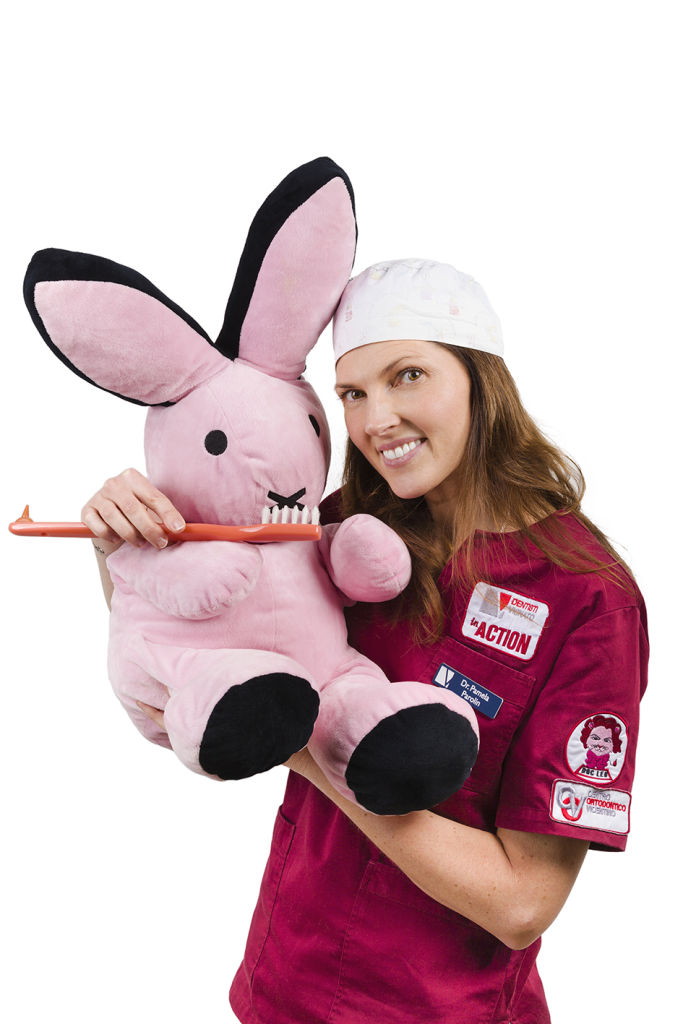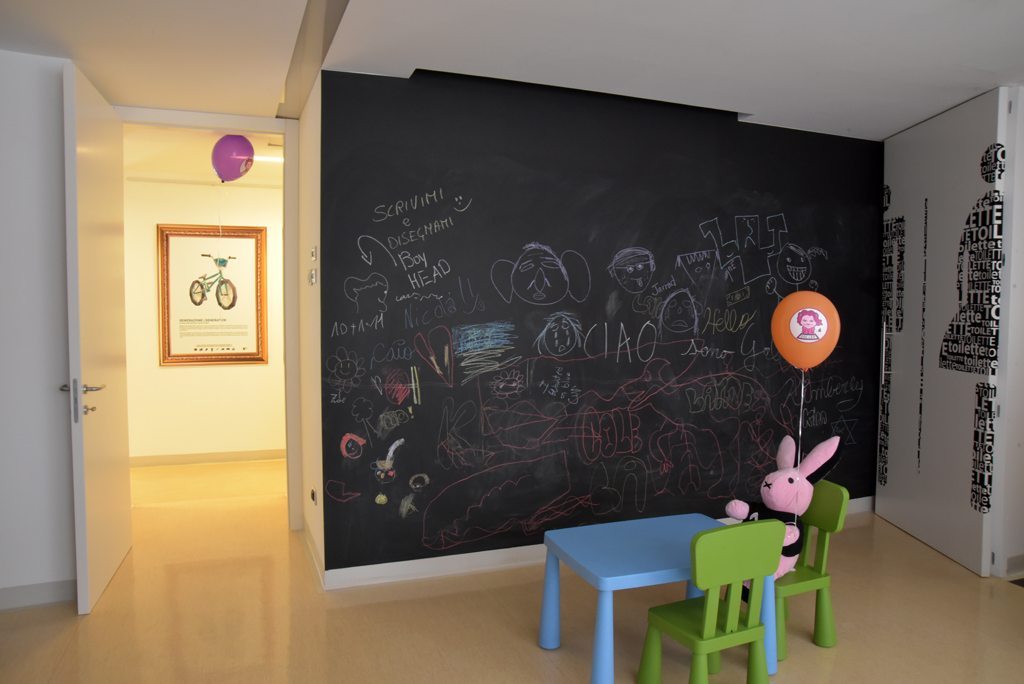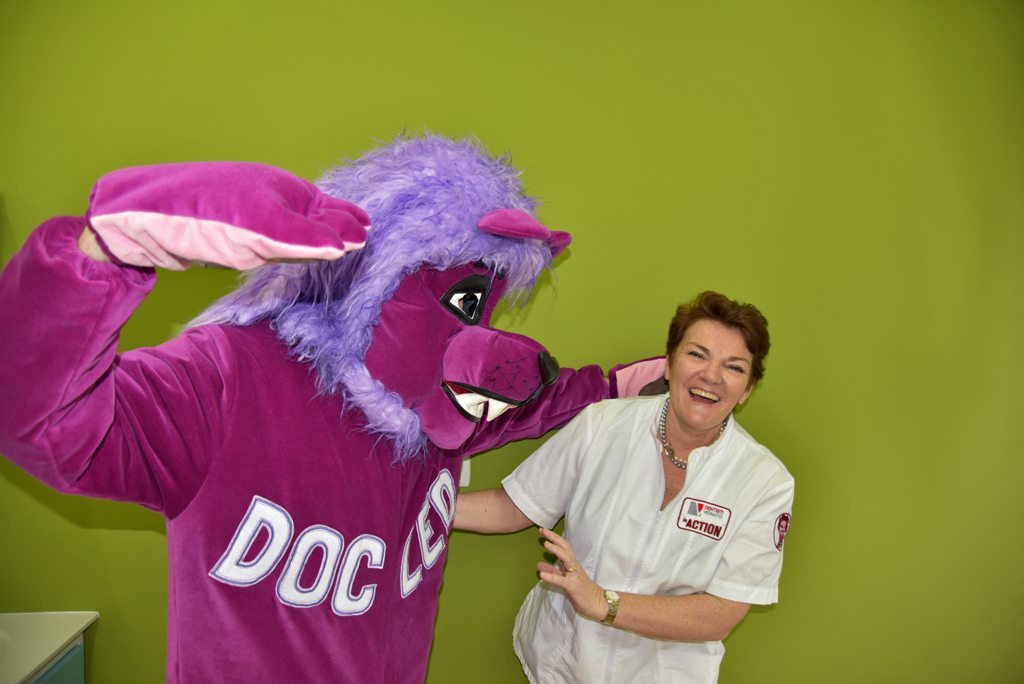Il dentista per bambini è amico dei miei denti, mi ha insegnato come cambierà nel tempo la mia bocca…

Dentista per bambini
La bocca ha un ruolo fondamentale nella crescita del bambino perché con essa si impara a conoscere il mondo esterno, si sviluppano le funzioni primarie come la deglutizione, la fonazione (articolazione di suoni e linguaggio) e la masticazione.
Ecco perché nella nostra clinica il ruolo del dentista per bambini è fondamentale. Questa figura insegna sin dai primi anni, con serenità e naturalezza, come fare prevenzione per ridurre la necessità di affrontare le cure odontoiatriche.
Seguire lo sviluppo della bocca dei nostri piccoli pazienti fin dai primissimi anni è fondamentale per mantenere in salute la dentatura decidua (da latte) e “guidarne” la crescita funzionale, morfologica e sensoriale che potrà contribuire a una corretta crescita globale del bambino.
GUARDA IL VIDEO DELLA DENTISTA PER BAMBINI DR. PAMELA PAROLIN
L’approccio psicologico dedicato al bambino
 Un buon rapporto con il dentista fin da bambini determina il modo in cui essi saranno pazienti per il resto della vita.
Un buon rapporto con il dentista fin da bambini determina il modo in cui essi saranno pazienti per il resto della vita.
Il nostro approccio prevede il gioco e la stimolazione dell’immaginazione come componenti imprescindibili la cura per garantire la massima collaborazione e la buona riuscita dei trattamenti.
A questo, il dentista per bambini, associa l’impiego di tecniche non-farmacologiche (comunicative e comportamentali: tell-show-do, rinforzo positivo, comunicazione non verbale, distrazione, ecc…) e farmacologiche. In tal modo aiutiamo bambini, adolescenti e persone con disabilità, a diminuire l’ansia, sviluppare un atteggiamento positivo nei confronti del mondo odontoiatrico e portare a termine trattamenti dentali in modo sicuro ed efficace.
Questione di approccio…
In questo delicato approccio, il nostro ruolo di dentista pediatrico (pedodontista) specializzato, ci consente di scegliere l’approccio migliore in base al livello di sviluppo del bambino. Il dentista per bambini valuterà anche la sua predisposizione alle cure, il temperamento e prevederà la sua risposta ai trattamenti dentali.
È qui che sta la bravura del dentista pediatrico: scegliere la metodica più adatta per ridurre al minimo il livello di paura e ansia del bambino che si ha di fronte.
Nei casi più difficili, o per certi interventi, è possibile associare queste tecniche a specifiche pratiche di ansiolisi farmacologica come il protossido d’azoto. Il protossido è un gas non tossico il cui effetto si esaurisce immediatamente dopo il distacco della mascherina con cui viene somministrato, e ha lo scopo di abbattere l’ansia, lo stress e il riflesso del vomito.
La prima visita con il dentista per bambini
Rappresenta un momento importantissimo nel percorso di avvicinamento al mondo odontoiatrico e determina l’instaurarsi di un sentimento di fiducia e di empatia necessari al successo della terapia odontoiatrica.
Il dentista dovrà fare in modo che la prima visita sia vissuta dal bambino come un’esperienza positiva, costruttiva e divertente.
Il momento ideale per proporla è quando non si siano già riscontrati problemi dentali da trattare o siano presenti patologie dolorose.
Il bambino inizierà così a prendere confidenza con l’odontoiatra, le attrezzature che utilizza come un “mago esperto”, imparando a riconoscere gli odori e i rumori tipici dello studio dentistico.
Una prima visita che abbia uno scopo dimostrativo, oltre che conoscitivo, può quindi risultare molto vantaggiosa.
Il percorso di cura
Esso è altrettanto importante perché accompagna il bambino fino all’età adulta e gli consente di sviluppare abitudini corrette che lo accompagneranno nella vita adulta.
In questa fase il dentista per bambini fornisce le indicazioni utili a una corretta igiene orale, consigli sulle buone abitudini alimentari, e valuta con la famiglia il piano di cura più adatto per una crescita sana e armonica della bocca. A tutto questo integrerà protocolli di prevenzione, indagini intercettive e terapie per correggere possibili alterazioni funzionali.
Ortodonzia per bambini
 Tra i tre e i sei anni consigliamo di presentare il bambino anche allo specialista in ortodonzia.
Tra i tre e i sei anni consigliamo di presentare il bambino anche allo specialista in ortodonzia.
Questo è il momento migliore per valutare lo stato di salute delle strutture che compongono l’architettura cranio-facciale. Sarà possibile intercettare eventuali anomalie nello sviluppo nella posizione delle ossa mascellari e dei denti che possono influenzare il benessere della bocca ma anche del corpo del bambino.
E’ infatti ormai accertato come un errato sviluppo delle ossa mascellari, e un’alterata funzione dell’apparato stomatognatico (masticazione, respirazione, deglutizione), possano influire negativamente sulla postura, sulla funzione e sul movimento di altri distretti corporei.
Intercettare prima dei sei anni i segnali di una disarmonia dento-scheletrica permette di correggerli e trattarli più efficacemente.
Intervenire precocemente è fondamentale.
In questa prima fase – detta intercettiva – diversi specialisti, come l’ortodontista, il logopedista, l’osteopata e l’otorinolaringoiatra possono lavorare in sinergia con il pedodontista (dentista dei bambini). L’unione di questi differenti approcci consente di pervenire alla più completa e definitiva correzione di ogni alterazione funzionale.
Grazie all’impiego di apparecchi ortodontici rimovibili e di esercizi di rieducazione, si riesce infatti a predisporre un corretto rapporto tra le arcate dentarie, si creano gli spazi sufficienti per l’allineamento dei denti e si correggono i movimenti della lingua e della muscolatura periorale.
Questa fase di trattamento precoce non elimina l’eventuale necessità di una terapia ortodontica (seconda fase) in dentizione permanente, ma la rende più semplice.
Perché scegliere una terapia ortodontica per tuo figlio?
L’ambiente
 Costituisce un altro elemento che riteniamo fondamentale perché il luogo (sala d’attesa e ambulatorio) dove riceviamo e curiamo i bambini deve essere accogliente e familiare, capace di coccolarli e farli sentire protetti.
Costituisce un altro elemento che riteniamo fondamentale perché il luogo (sala d’attesa e ambulatorio) dove riceviamo e curiamo i bambini deve essere accogliente e familiare, capace di coccolarli e farli sentire protetti.
Vogliamo che già dall’ingresso nella sala d’attesa il bambino percepisca che il luogo è pensato per lui.
Può trovare una grandissima lavagna a parete per disegnare o, perché no, a volte fare i compiti, un tavolino dove leggere o colorare, peluches di varie dimensioni, un televisore che racconta come altri bimbi/cartoni animati hanno affrontato con il sorriso le cure. Naturalmente non manca DOC LEO la nostra mascotte che, sottoforma di pupazzo animato o poster alle pareti, ci aiuta a instaurare un dialogo sereno e giocoso con il piccolo paziente.
Una porta colorata che separa la sala d’attesa dagli ambulatori segna l’ingresso nel mondo di DOC LEO, dove il bambino vedrà all’opera il suo amico dentista con “attrezzi magici” come la poltrona che sale e scende.
DOC LEO
 E’ l’aiutante pasticcione e divertente che affianca i nostri dottori e insegna ai bimbi come lavarsi i denti, quali sono gli amici e i nemici del sorriso e che non bisogna avere paura del dentista.
E’ l’aiutante pasticcione e divertente che affianca i nostri dottori e insegna ai bimbi come lavarsi i denti, quali sono gli amici e i nemici del sorriso e che non bisogna avere paura del dentista.
I suoi strumenti sono la simpatia, un libretto da colorare e leggere, una corona e una medaglia che premiano il coraggio, i suoi immancabili palloncini e braccialetti colorati.
